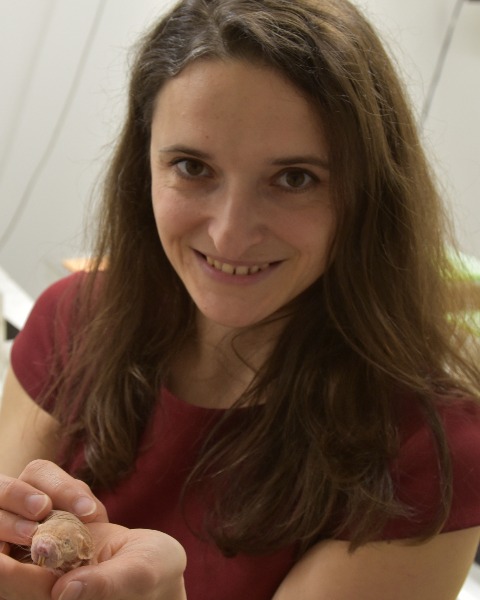Ovary/Oocyte
Ovarian Workshop Poster Session
(O-03) Long-lived rodents as emerging model of long-term female fertility in mammals
Monday, July 15, 2024
5:00 PM - 6:00 PM IST
Room: The Forum

Lenka Gahurova, PhD (she/her/hers)
Assistant professor and group leader
University of South Bohemia, Czech Republic
Poster Presenter(s)
Abstract Authors: Lenka Gahurova1; Eva Kopecka1; Nikolas Tolar1; Pavlina Chuda1; Lenka Osmerova1; Radim Sumbera1
1 University of South Bohemia, Ceske Budejovice, Czech Republic
Abstract Text: Mammalian oocytes are believed to be established during prenatal development as a finite pool. They are essential for propagation of species yet are among the oldest cells in the body – they can be several decades old in long-lived species. Moreover, number of oocytes decreases with age, until ovulation ceases permanently. The suboptimal quality and quantity of oocytes, interconnected with the declining properties of their ovarian niche, are among main factors causing female age-associated fertility decline. This is mostly studied in laboratory mouse, however, growing number of studies reveal remarkable differences when other species are explored. African mole-rats and blind mole rats are two distinct groups of rodents that are subterranean, long-lived and with long female reproductive span. While blind mole rats are solitary, African mole-rats live in a social system where only one female breeds and ovulates, while the remaining females are non-ovulating non-breeders. This provides a unique opportunity to study how these characteristics impact oocyte properties, age-associated quality decline over long fertility span, the effects of ovulations, and how they evolved within rodent lineages. We identified unique characteristics of mole-rat oocytes and their ovarian niche. These comprise differences in the oocyte transcriptome such as the absence of epigenetic factors considered essential for mammalian oocytes, different transposon expression, high genome integrity during aging, human-like meiotic spindles, and resistance to inflammaging, age-associated chronic pro-inflammatory response. Moreover, we revealed that repeated ovulations play an important role in oocyte quality decline, and that their ovaries comprise large ovarian reserve of early oocytes.
1 University of South Bohemia, Ceske Budejovice, Czech Republic
Abstract Text: Mammalian oocytes are believed to be established during prenatal development as a finite pool. They are essential for propagation of species yet are among the oldest cells in the body – they can be several decades old in long-lived species. Moreover, number of oocytes decreases with age, until ovulation ceases permanently. The suboptimal quality and quantity of oocytes, interconnected with the declining properties of their ovarian niche, are among main factors causing female age-associated fertility decline. This is mostly studied in laboratory mouse, however, growing number of studies reveal remarkable differences when other species are explored. African mole-rats and blind mole rats are two distinct groups of rodents that are subterranean, long-lived and with long female reproductive span. While blind mole rats are solitary, African mole-rats live in a social system where only one female breeds and ovulates, while the remaining females are non-ovulating non-breeders. This provides a unique opportunity to study how these characteristics impact oocyte properties, age-associated quality decline over long fertility span, the effects of ovulations, and how they evolved within rodent lineages. We identified unique characteristics of mole-rat oocytes and their ovarian niche. These comprise differences in the oocyte transcriptome such as the absence of epigenetic factors considered essential for mammalian oocytes, different transposon expression, high genome integrity during aging, human-like meiotic spindles, and resistance to inflammaging, age-associated chronic pro-inflammatory response. Moreover, we revealed that repeated ovulations play an important role in oocyte quality decline, and that their ovaries comprise large ovarian reserve of early oocytes.
